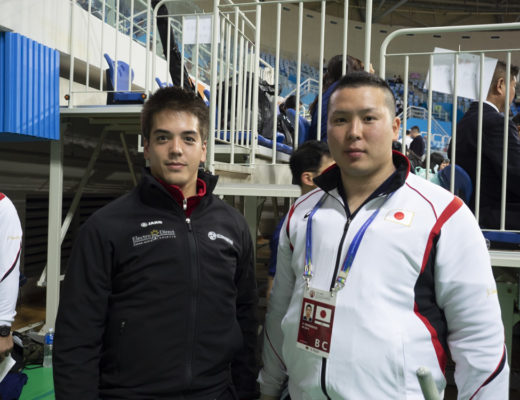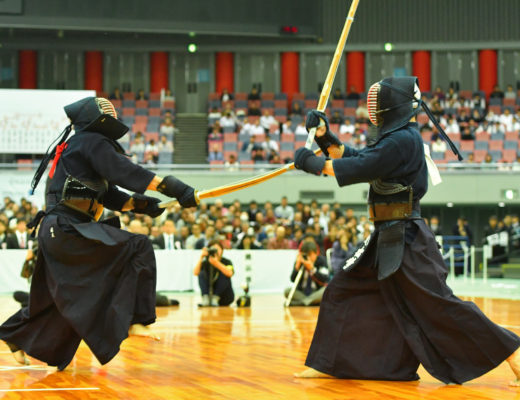On November 9th, 2019 (Sat) The 27th Dusseldorf Cup was held in Dusseldorf, Germany.
This time, 100 people from 4 countries and 15 dojos participated. Boys and girls aged 6 to 18 had a clash of technique and skill. How was this tournament held for the 27th time this year, and with what mindset did children participate?
In this article, We will introduce interviews with organizers on the key points of this tournament which has been running for over a quarter of a century. We hope it will be helpful for those who run kendo tournaments all over the world.
Points to manage the tournament & difficulties
First of all, I asked Mr. Hashimoto, the director of JCD e.V. Kendo Club, about the points that are considered in managing the tournament and the difficulties that may arise.
● How has the three-country tournament come into being 27 years ago?
“This tournament began in 1993 between the Dusseldorf Shonen Kendo Club (the club name at that time), the Kojika Dojo in Belgium Ghent, and Renshinjuku in Amstelveen, the Netherlands. The three-country tournaments were held three times a year in February in the Netherlands, May in Belgium, and November in Germany.
Unfortunately, the Furuya Cup in February did not continue, but the Kojika Cup held in Belgium in May still exists in addition to the Dusseldorf Cup.”
● What is special about running this tournament?
“In the spirit of Koken Chiai (friendship through crossing swords), we focus on providing opportunities for children to get along with each other.
In addition, the competition table is organized so that there are enough fair opportunities for individual matches. In particular, we arrange mixed teams for players who do not have a team.”
In fact, in this tournament, many teams of 3 were mixed teams. Furthermore, after the matches the winning and losing players exchange greetings immediately and from that scenery I feel the spirit of “Koken Chiai” which is to be grateful to your opponent and this deepens the exchange. Kurogi, the founder of the Belgian Wakakoma Kenshikai says, “It is one of the pleasures of the tournament that I can meet other clubs.”
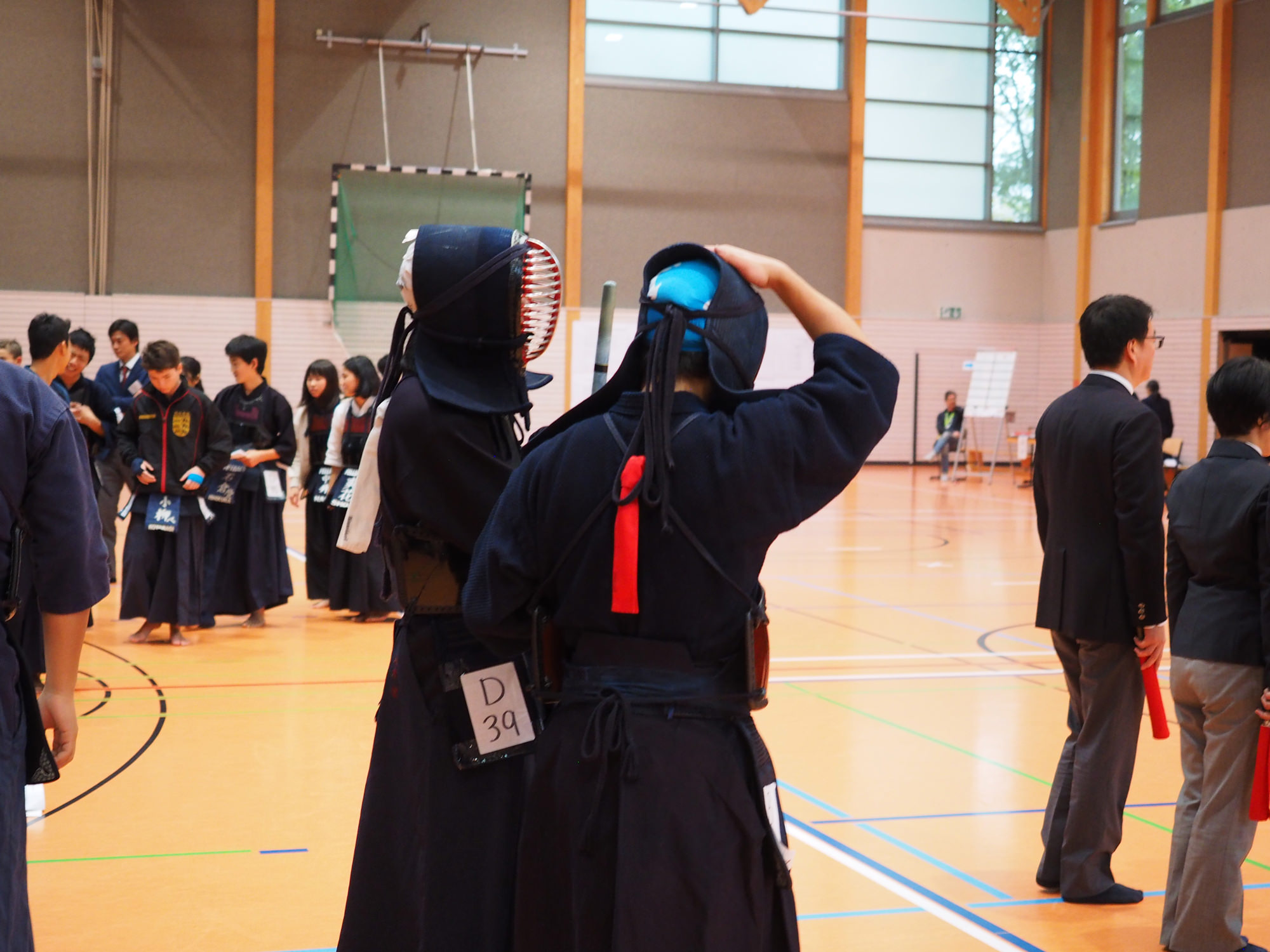
Players who exchange greetings after the game
There are not many opportunities for boys and girls from other countries to gather together. Since it is a precious opportunity, the schedule is adjusted so that joint practice can be held at the end. The tournament runs smoothly because the match time is set to 2 minutes and there is a hantei (winner decided by referee’s call) in the case of a draw, excluding the semi-finals and finals.
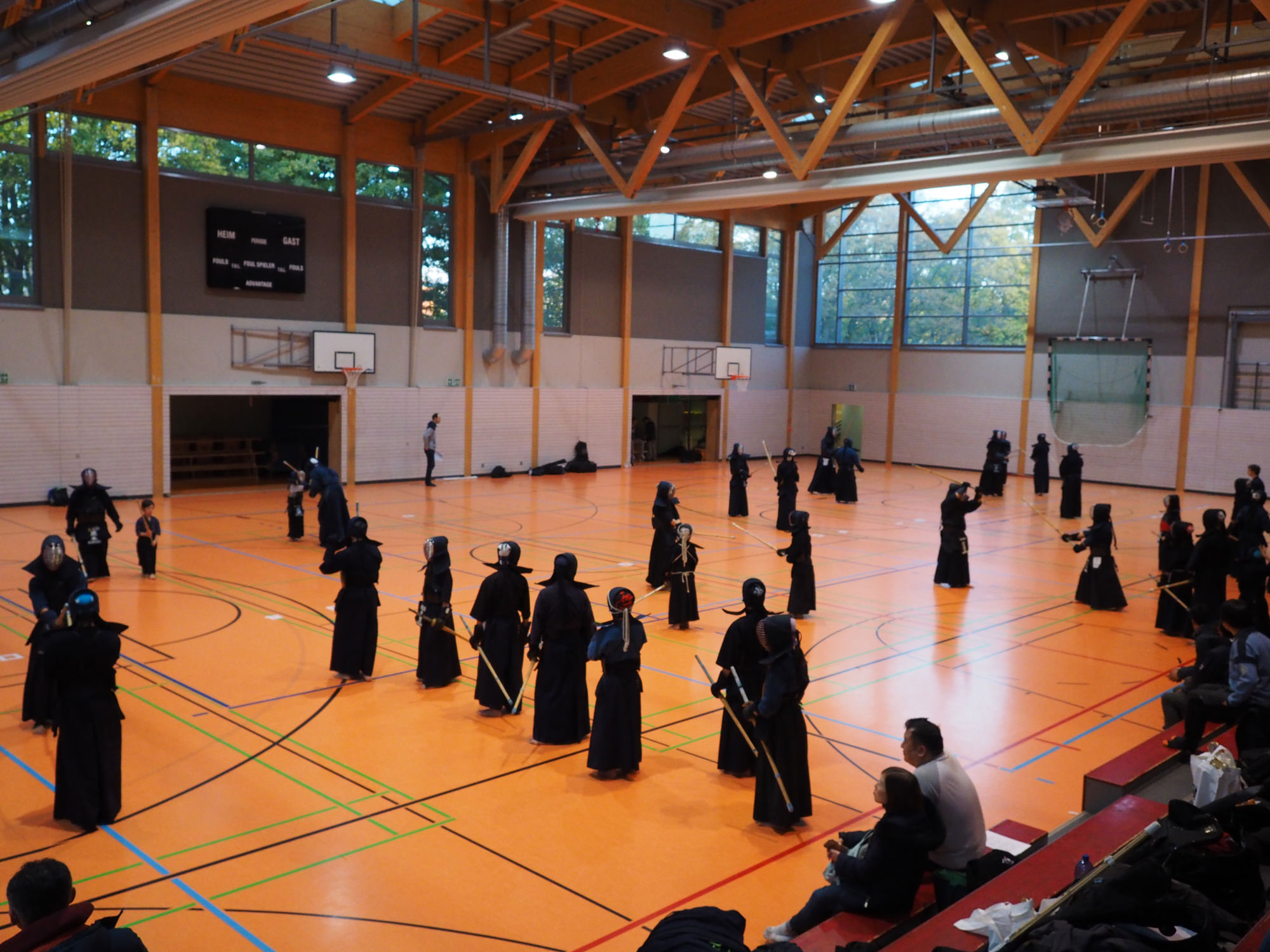
After the matches, a joint practice was held and the referees stood as Motodachi
● Have you ever struggled?
“I think the troubles are common for the low number of children at each dojo.
However, if these tournament opportunities disappear, the kendo population will decrease even further so the people who are involved have to continue to do their best. I think this tournament has been held every year for more than a quarter of a century because of the efforts of those people.”
The number of participating dojos and players has shown a huge expansion for a while, but the number of participants has remained around 100 to 120 in recent years. Many families stay the night on-site before the tournament or leave home early in the morning. It is a day when the effort of the parents who try to promote joint training, friendly exchanges and the work of volunteers to run the matches smoothly can be clearly felt.
Reasons why children continue Kendo
Let’s see the views on kendo of the boys and girls who actually participated and practiced this day.
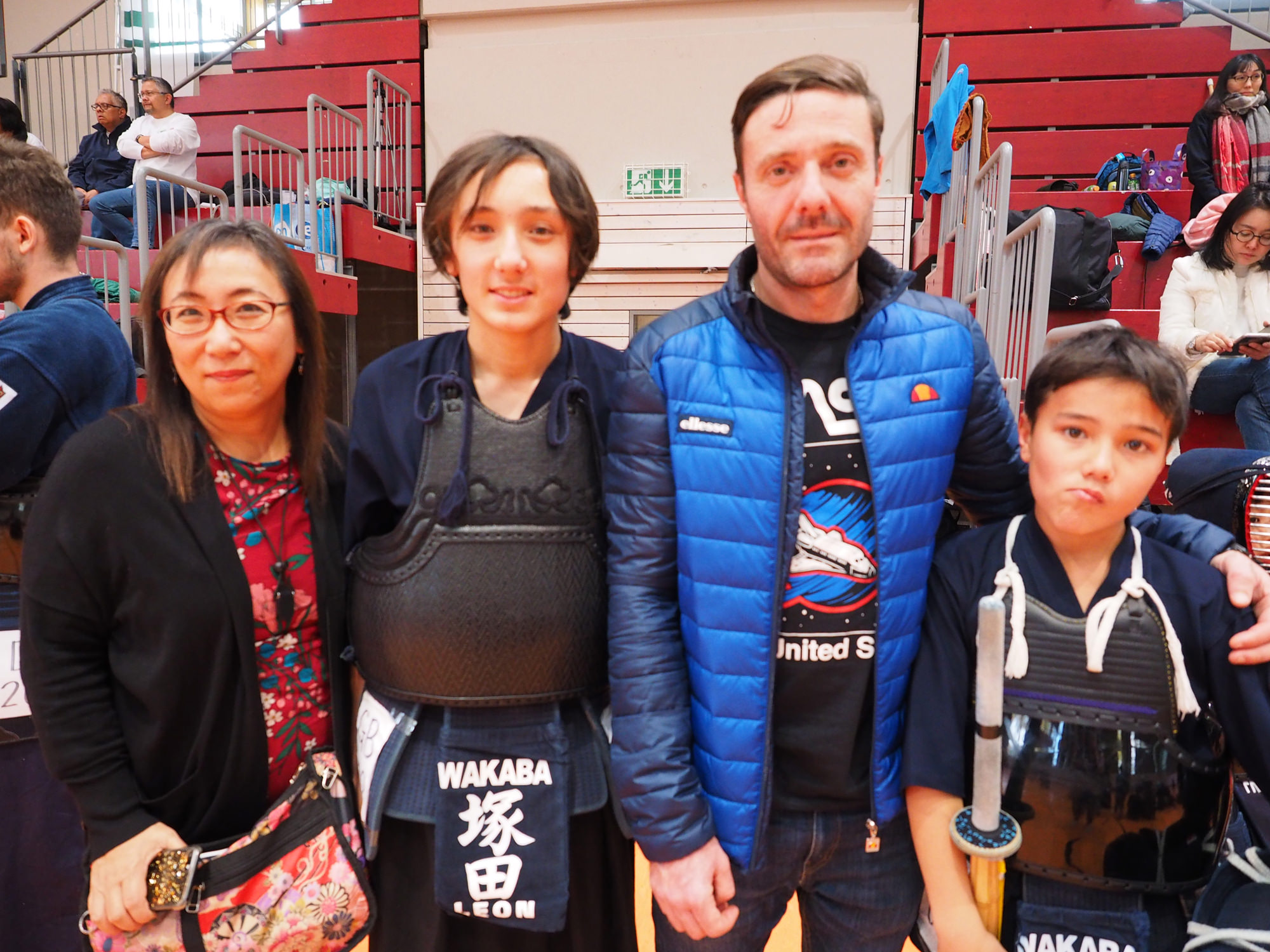
This is the Tsukada family from Wakaba Dojo, the only participants from England. When his child started kendo, Mr. Tsukada also joined.
As a parent he said “I want my sons to have courtesy and respect for others through kendo.” He also named “mindset, spirit, discipline and concentration” as the appeal of kendo.
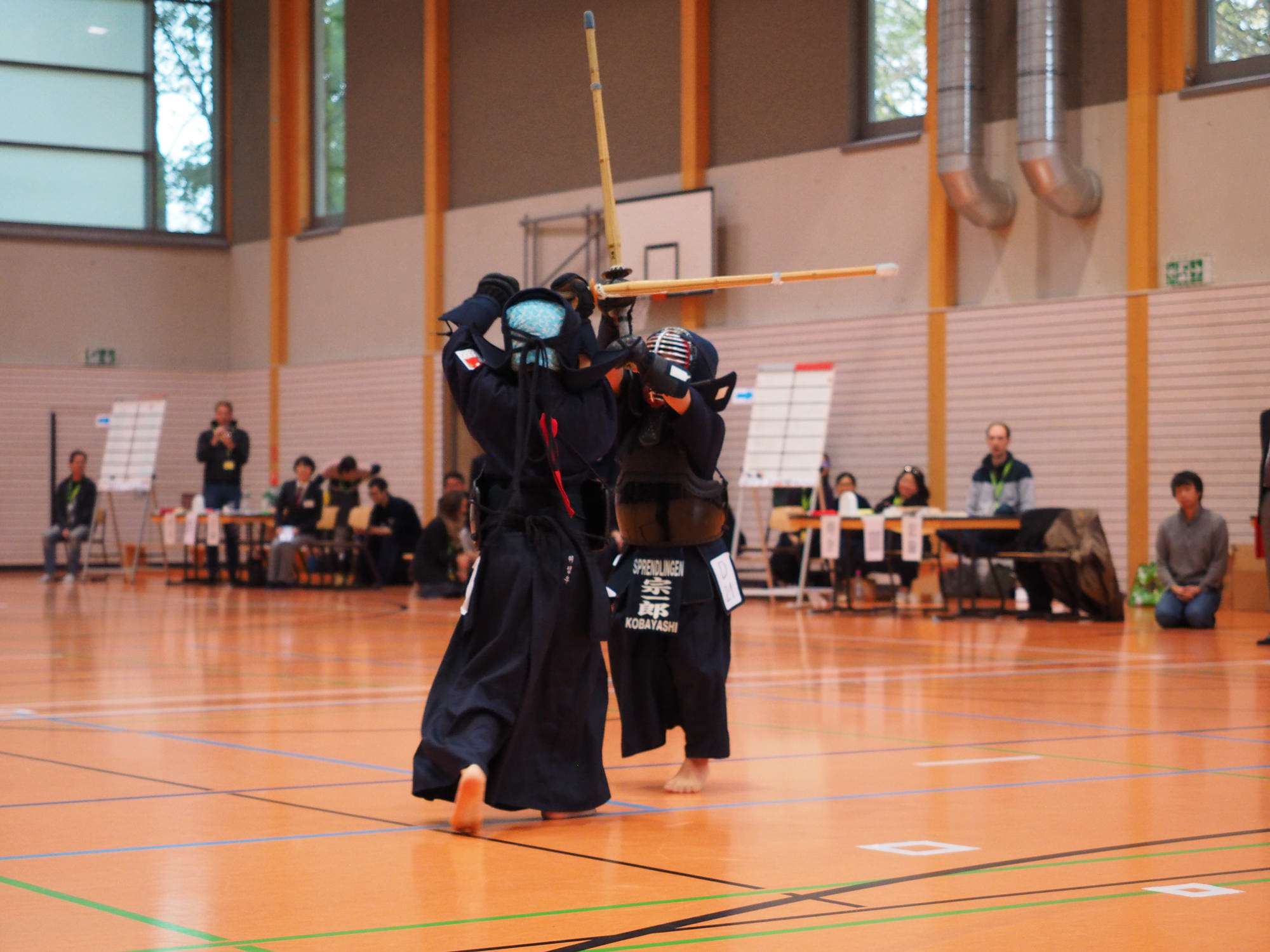
Little Kobayashi won the individual battle category C and teamed up with his brothers for a team of 3. The three brothers and their father all practice kendo. Mr. Kobayashi started kendo when his youngest child started.
At this tournament, it can be felt that many families and brothers are doing kendo. Also, even if their name is Japanese, there are many children who grew up locally and speak local languages. Some families are here with their families due to work, but many seem to have been born and raised in these countries and practice kendo.
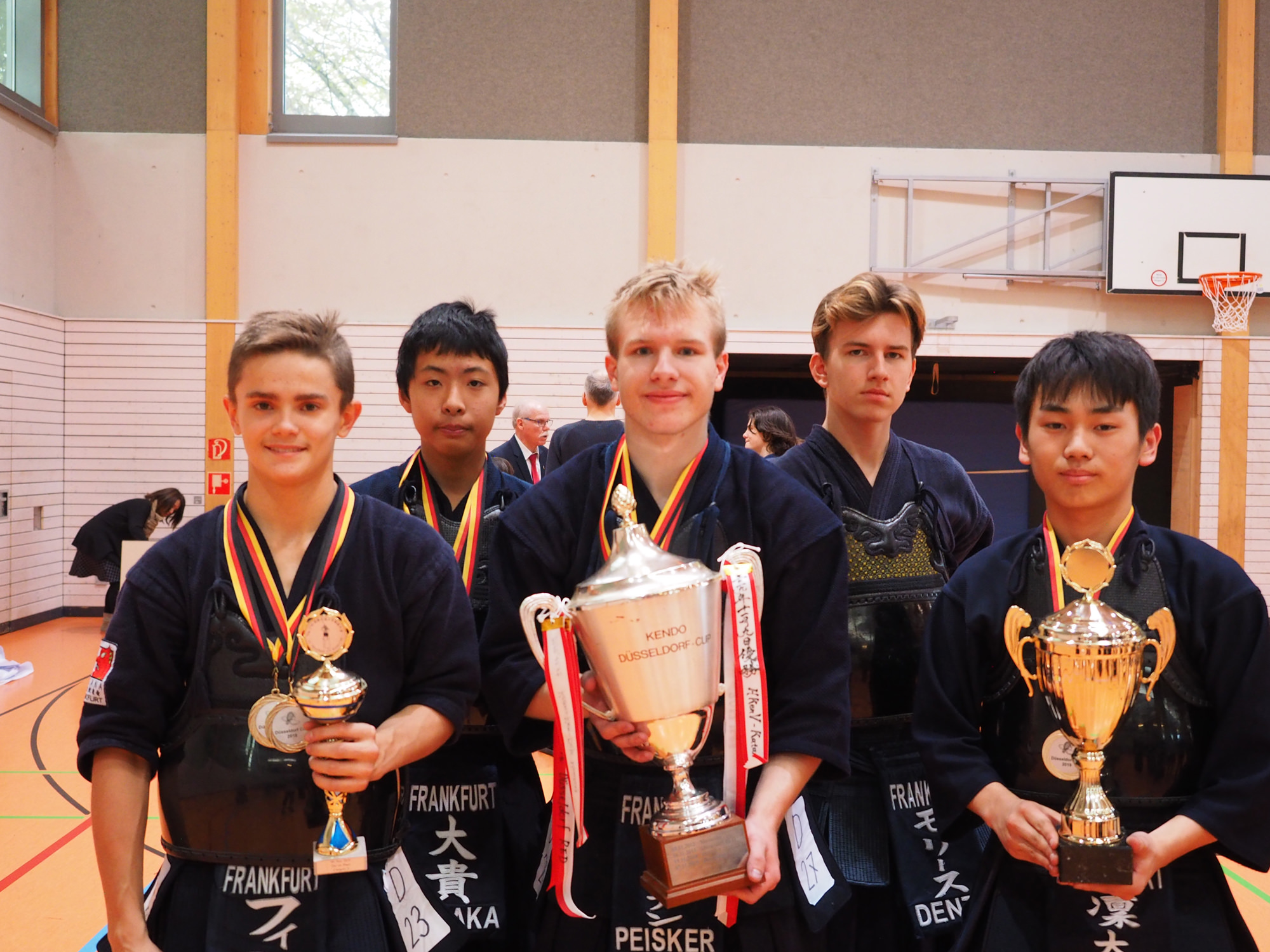
The 14-year-old Finn started kendo at the age of 7 and has participated in many competitions. He is practicing at the Katana Dojo in Frankfurt, and the reason he started kendo was that he was encouraged by relatives with kendo experience saying “kendo would suit you”.
His mother never knew about kendo. However, she now seems to be attracted by the spirit of how to behave with others. She also said that doing kendo can help children become more confident.

Belgian Wakakoma Kenshikai was a big eye catcher. This is a dojo created by Kurogi sensei for young kendo practitioners. Although adults are affiliated, it operates based on the concept of helping to raise children. Wakakoma Kenshikai’s Kitajima and Abe have been practicing kendo for 5-6 years, saying “Kendo is fun. I want to become stronger.” It was a very impressive dojo with the elders taking care of little children.
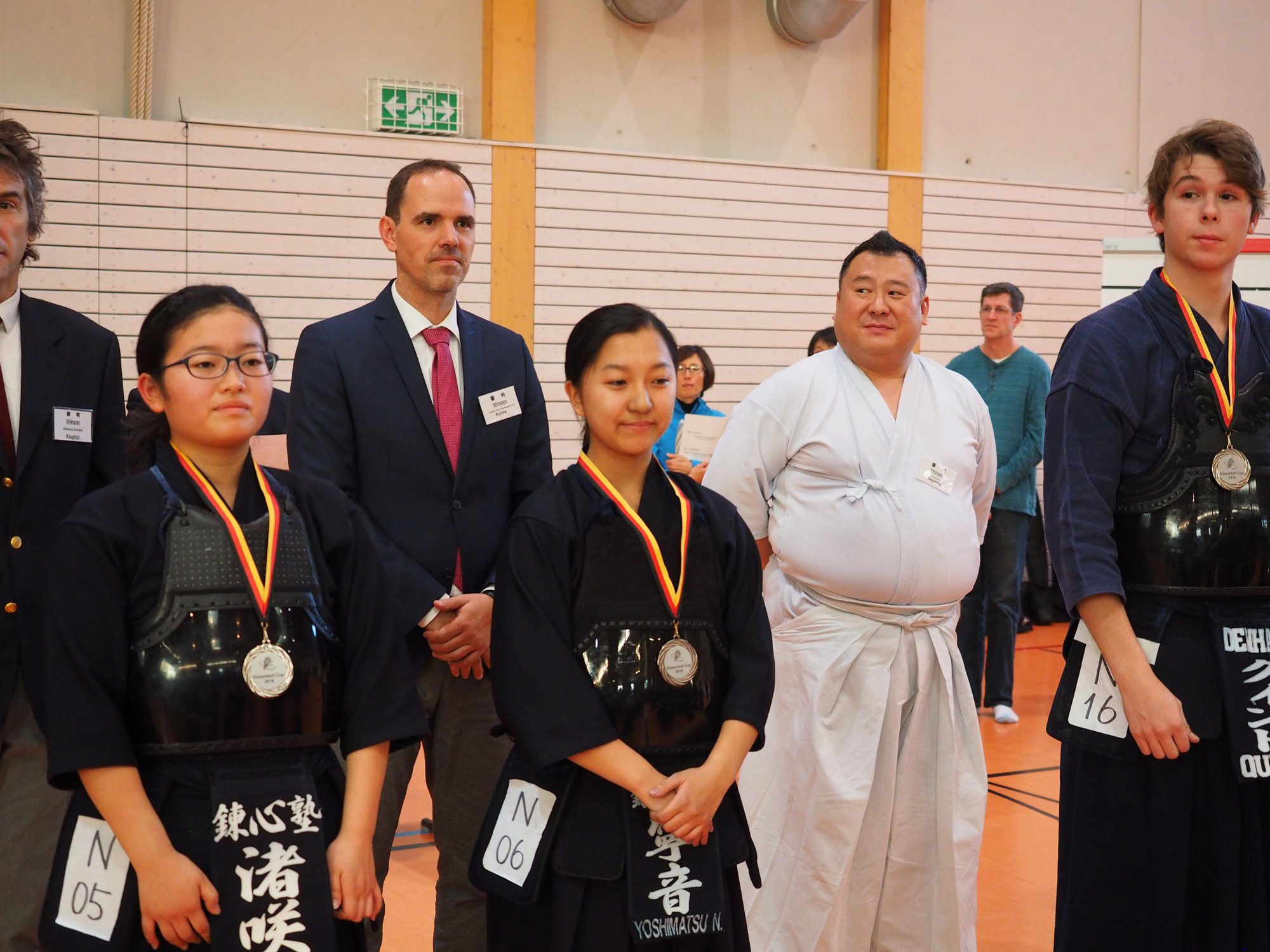
Lastly, 18-year-old Quint from the Netherlands. This year is his final participation in this tournament. Once he was searching on the internet and found kendo. As Quint was originally interested in Japan, unlike other sports, he was attracted to respecting others and being able to continue practicing throughout his entire life. “Kendo has something more than games,” he said after the match. Compared to last year, he has shown significant growth and we are looking forward to his future success.
That’s the report for this tournament.
Throughout the tournament, not only the organizers but also the players and parents acted politely and promptly. It could be felt that everyone was able to participate comfortably.
The next big tournament is the Kojika Cup scheduled to be held in Belgium in May. Kendo Jidai will continue to report on the European boys and girls kendo events. We hope to contribute to the development of kids kendo by spreading awareness. Reports and articles are usually paid, but these articles are free to read.
Please contact us on <info@kendojidai.com> if you have any interesting events, advanced activities or news that promote the development of kendo. We cannot respond to all requests, but we will do our best to report on this website as much as possible.


